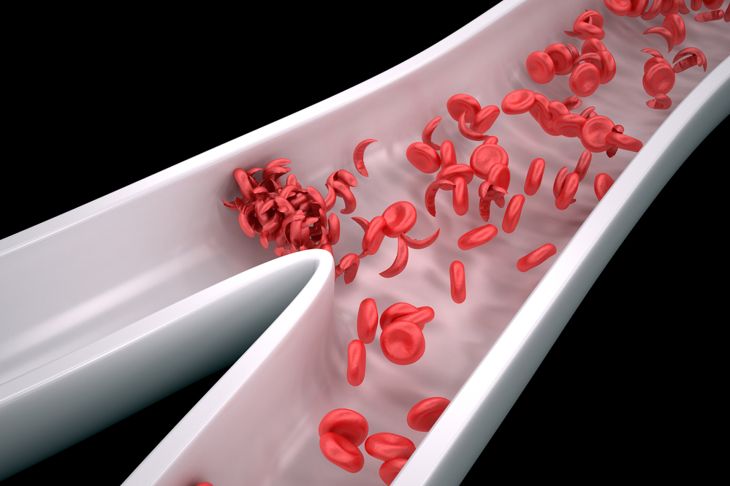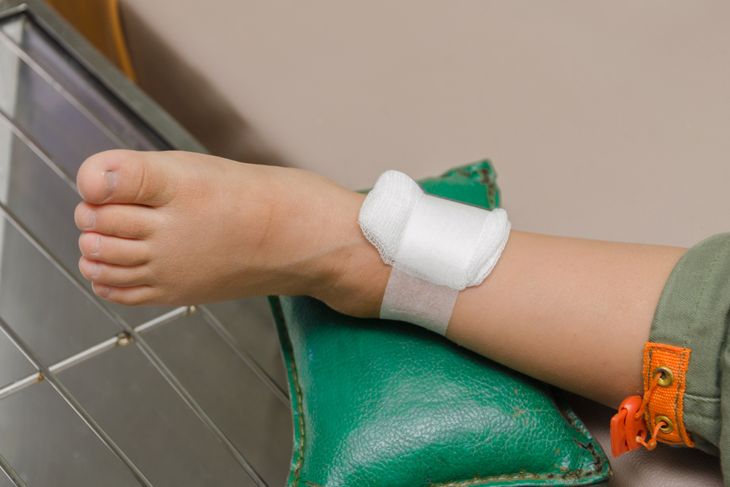Sickle cell anemia is a relatively common blood disease in which the red blood cells acquire an abnormal shape. The regular shape of red blood cell is important because it helps it to flow smoothly inside the vessels. When the natural shape of the red blood cell changes, it becomes easy for it to stick to other abnormally shaped red blood cells, leading to problems. Sickle cell anemia can occur in many races, but it’s more common in African-Americans.
Swelling of the hands and feet
One of the earliest signs of the disease is swelling of the fingers and toes. This swelling is usually painful and is called ” dactylitis” or “sausage digit.” It can be present even before the child has turned six months. It is rarely seen in children over two years old. The vessels of the fingers and toes tend to be small, so it’s easy for abnormally shaped red blood cells to aggregate and occlude them. This swelling blocks the blood supply to the bone and causes bone death.
Tiredness
Normally, red blood cells deliver oxygen to different cells of the body so the cells can have enough energy to do their activity. When there’s a disease that affects red blood cells, various organs inside the body can’t get the energy they need. As a result, the child will feel tired and exhausted all the time and won’t be able to do their normal daily activities. They may also feel weak and unable to focus. Fatigue isn’t specific to sickle cell anemia and can occur with other different types of anemia, as well as numerous other conditions.
Yellowish skin
The typical lifespan of a healthy red blood cell is around 120 days. But in sickle cell anemia, the lifespan becomes much shorter. When a red blood cell “dies,” it gives off a substance called bilirubin. Increased destruction of a vast number of red blood cells results in increased levels of bilirubin in the blood. When this released bilirubin reaches a certain threshold, it causes the skin of the child and the whites of his eyes to have a yellowish shade, and this is often called “jaundice.”
Pain
A child who has sickle cell anemia can experience two types of pain: acute and chronic. Acute pain starts suddenly and unexpectedly without warnings, while chronic pain starts gradually. Acute pain is usually felt in the legs and lower back and is due to obstruction of blood flow by sickle-shaped red blood cells. This is known as a vaso-occlusive crisis. If episodes of this crisis keep occurring over and over again, this leads to permanent damage to the body’s organs. On the other hand, chronic pain is usually severe and prevent patients from having a healthy life.
Infections
When a child has sickle cell anemia, they are more likely to catch an illness than a healthy child. This is because of how sickle cell disease affects the spleen. Typically, the spleen helps filter bacteria from blood. When the spleen doesn’t function correctly, this filtering action is lost, and it’s easier for bacteria to infect those children. The most common bacteria that affects those children include Pneumococcus and Hemophilus influenza type B, which can cause lung inflammation.
Acute Chest Syndrome
Pain in the chest, increased body temperature, difficulty breathing and cough are all symptoms that characterize this syndrome. It occurs due to the low immunity status of people with sickle cell anemia. Bacteria can reach the lung and cause inflammation of the lung tissue. This inflammation reduces the oxygen supply and causes the red blood cells to become more crescent-shaped. They further lose their ability to carry oxygen, and this cycle repeats.
Leg Ulcers
A leg ulcer is a break that occurs in the skin lining the leg. It’s quite common in people with sickle cell anemia but is less likely to occur in children under ten years old. The ulcer is more likely to be present In an area with thin skin and a small amount of fat. The most common site is on the ankle especially the inner side of the ankle. The ulcer is usually small at first but gradually increases in size.
Eye and Heart disease
Sickle cell disease affects all the blood vessels of the body. The eyes and the heart aren’t exceptions. It can affect vision, as the red blood cells aggregate inside the vessels and cause blockage or bleeding. The retina can also separate from the layer beneath it and detach from its normal position. This condition is called retinal detachment and can cause vision loss. On the other hand, patients tend to undergo repeated blood transfusion, each time adding more iron to their fragile bodies. This excess iron can cause heart damage.
Pregnancy
When women with sickle cell disease become pregnant, their condition becomes more severe. They will be prone to more frequent pain episodes, and they are more likely to experience high blood pressure and infections. Their baby can also be affected. Sickle red blood cells can cause the placenta to receive small amounts of oxygen that don’t cover the needs of the growing fetus. The disease might lead to miscarriage, preterm labor or even stillbirth. Even if the pregnancy continues without major complications, the newborn is often born underweight. That’s why a pregnancy for those with sickle cell disease is considered high risk and the woman should have appropriate medical supervision.
Mental Health
Sickle cell disease lowers the quality of life for the people who have it. The frequent episodes of pain, the need for repeated blood transfusion and the increased risk of catching an infection impose many limitations on their lives. They feel tired and weak most of the time, and it’s hard for them to concentrate and live a healthy life. This can lead them to feel like it’s hard for them to connect with others, which may lead to frustration and depression.

 Home
Home Health
Health Diet & Nutrition
Diet & Nutrition Living Well
Living Well More
More




















